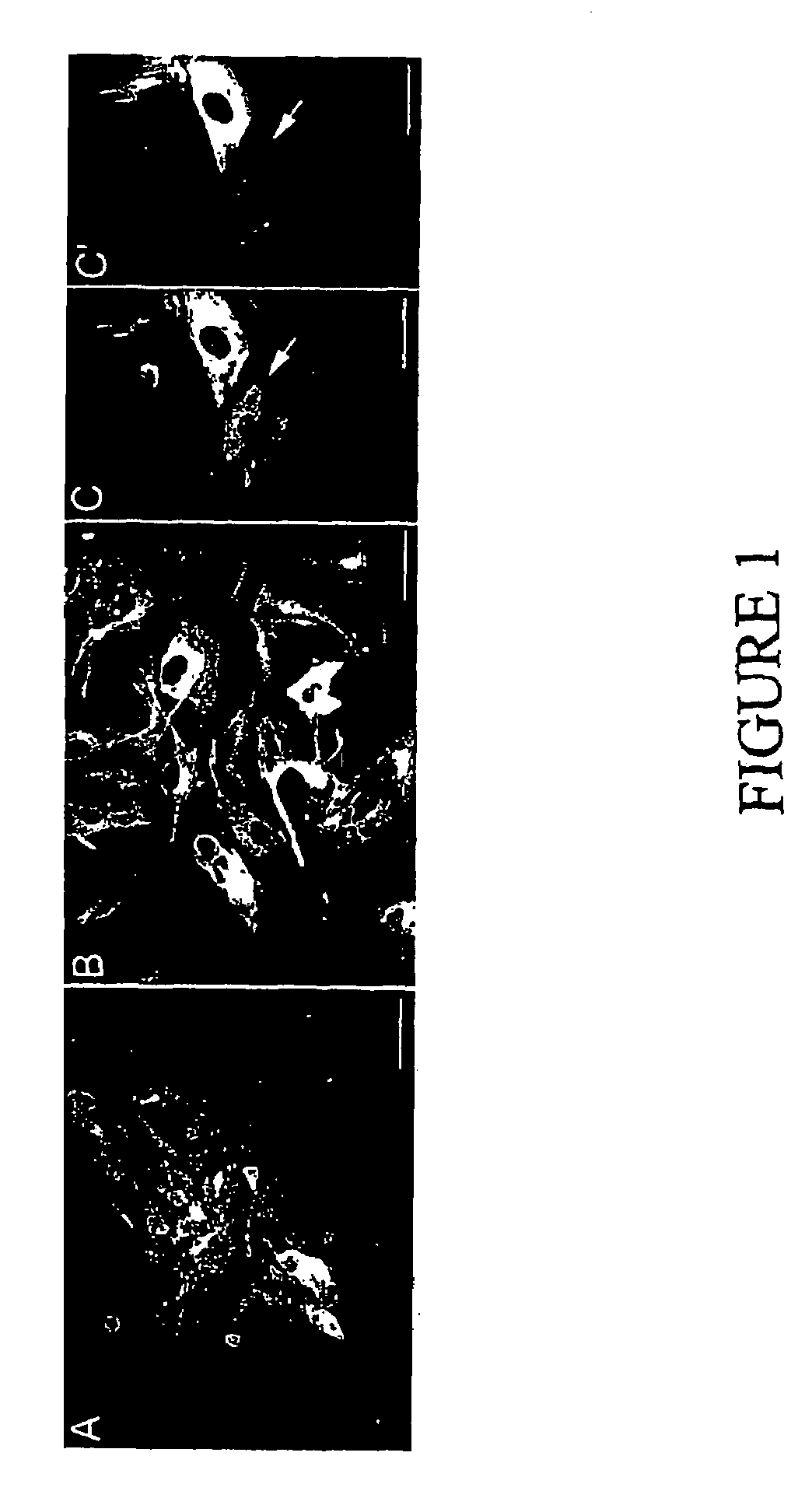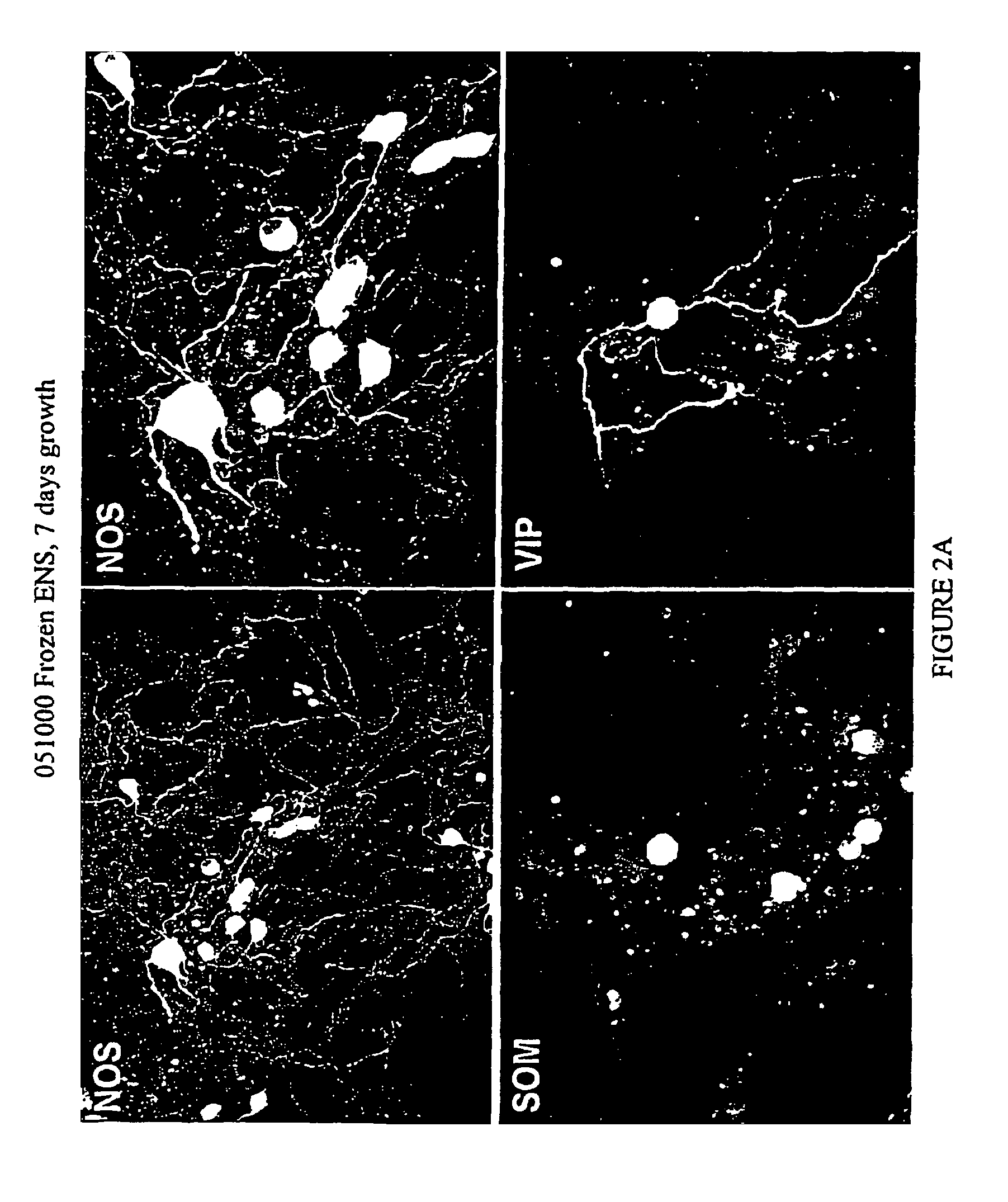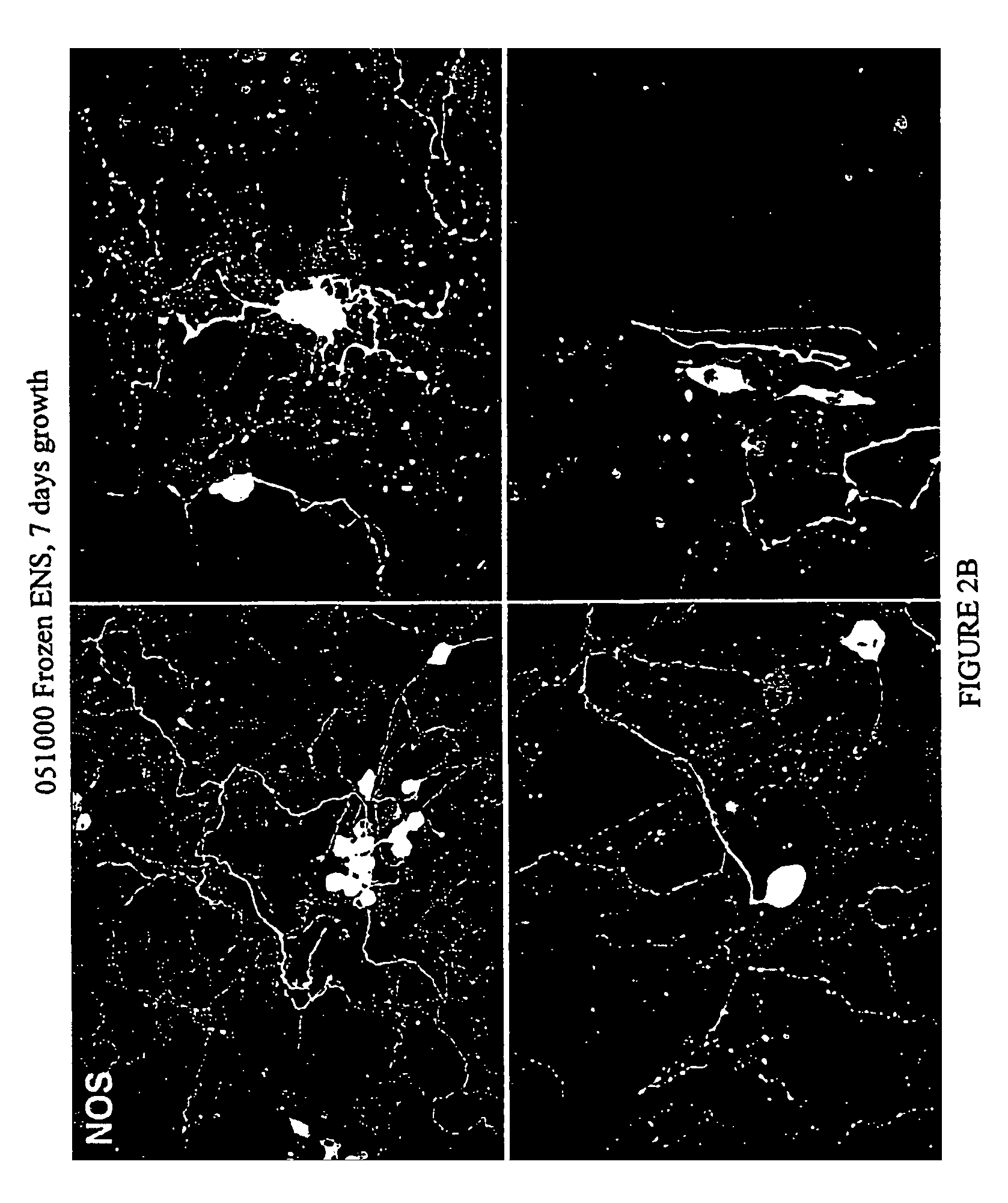Methods and compositions for cryopreservation of dissociated primary animal cells
a primary animal cell and cryopreservation technology, applied in the field of cryopreservation of primary animal cells, can solve the problems of inability to accurately model native tissue, inability to accurately model adult neuronal systems, and inability to immortalize such cells, etc., to achieve accurate models of adult neuronal systems, and inability to accurately model neonatal animal primary neuronal cell cultures derived from neonatal animals
- Summary
- Abstract
- Description
- Claims
- Application Information
AI Technical Summary
Problems solved by technology
Method used
Image
Examples
example 1
Preparation of Solutions and Culture Media
[0157]Preferably all culture media is prepared and stored for no longer than about 4-6 weeks, more preferably about 3 weeks. Still more preferably, all culture media is prepared fresh prior to use.
ENS Cell Culture Composition
[0158]Reagents:[0159]0.030 g cytosine arabinofluronoside in 100 ml distilled water[0160]0.0122 g uridine triphosphate in 100 ml distilled water[0161]0.246 g fluoro-2′ deoxyuridine in 100 ml distilled water[0162]0.584 g glutamine in 20 distilled water[0163]6.0 g glucose in 20 ml distilled water[0164]Penicillin / Streptomycin (lyophilized) in 20 ml distilled water[0165]Rat serum (blood spun at 2500 rpm at 4° C. for 15 minutes)[0166]Minimum essential medium (MEM)
[0167]100 ml of ENS cell culture composition is prepared by adding 1 ml each of cytosine arabinofluronoside, uridine triphosphate, fluoro-2′ deoxyuridine, glutamine, glucose, and Penicillin / Streptomycin solutions to 2.5 ml rat serum. MEM is added to the mixture to bri...
example 2
Enteric Neuron Isolation, Culturing and Cryopreservation
A. Tissue Isolation
[0228]Male Sprague Dawley rats 200-300 g (Charles River laboratories, Canada) are sacrificed by cervical dislocation according to Canadian Council on Animal Care guidelines, and a 30 cm segment of ileum isolated. This tissue is flushed with freshly-prepared gassed (95% CO2, 5% O2) Kreb's solution (7.36 g / L NaCl, 0.385 g / L KCl, 0.166 g / L NaH2PO4(H2O), 0.245 g / L MgCl2.6H2O, 0.368 g / L CaCl2.2H2O, 2.0 g / L glucose, and 2.1 g / L NaHCO3) to remove intestinal contents, and the tissue is maintained in continuously-gassed Kreb's solution on ice until processed for dissection. Dissection of intestinal segments is visualized using a dissecting microscope, with tissue pinned out in glass dissection trays filled with oxygenated Kreb's solution. Segments (3 cm) of the ileum, cleared of adherent connective tissue, are cut longitudinally close to the point of mesenteric attachment and pinned out, muscle side upwards ready for ...
example 3
CNS Cell Isolation, Culturing and Cryopreservation
A. Animals
[0252]Timed pregnant female Sprague-Dawley from Charles River are used. Rats are housed singly in type IV Macrolone cages (57×35×17 cm) with wood shaving bedding which is changed twice a week. A 12 h light / dark schedule is used and the room temperature is maintained at 20±0.5° C. with a relative humidity of about 40-50%. Timed pregnant animals are delivered to a vivarium in the second week of gestation and maintained on standard rodent chow and water till E9 Animals are housed, handled and sacrificed in accordance with the guidelines of the Canadian Council on Animal Care (CCAC).
[0253]All work stations are thoroughly sterilized with UV light and 70% ethanol before use.
[0254]The dissected regions are transferred immediately to culture dishes containing PBS kept on frozen ice packs. After 16 cortices have been collected, the culture dish is placed in a temperature monitored refrigerator and is kept under t...
PUM
| Property | Measurement | Unit |
|---|---|---|
| Fraction | aaaaa | aaaaa |
| Fraction | aaaaa | aaaaa |
| Fraction | aaaaa | aaaaa |
Abstract
Description
Claims
Application Information
 Login to View More
Login to View More - R&D
- Intellectual Property
- Life Sciences
- Materials
- Tech Scout
- Unparalleled Data Quality
- Higher Quality Content
- 60% Fewer Hallucinations
Browse by: Latest US Patents, China's latest patents, Technical Efficacy Thesaurus, Application Domain, Technology Topic, Popular Technical Reports.
© 2025 PatSnap. All rights reserved.Legal|Privacy policy|Modern Slavery Act Transparency Statement|Sitemap|About US| Contact US: help@patsnap.com



